Oxygen - of all the things we put in our bodies, it is by far the most important. If it weren't for oxygen, we'd cease to exist. It's definitely a good thing, then, that we can find oxygen all around us. Oxygen fuels our cells and gives our bodies the basic building blocks we need to survive. It helps us heal, and when we're stressed, taking a few deep breaths can help us calm down. But did you know the oxygen you're breathing right now is only about 21% pure?
That begs the question: What if we could breathe air that has 100% pure oxygen? As it turns out, Better Life Carolinas provides exactly that with our hyperbaric oxygen therapy (HBOT). And while the name sounds like something out of a sci-fi movie, the technology and benefits are real.
What is Hyperbaric Oxygen Therapy?
A wise person once said that oxygen under pressure equates to pure health. In some ways, that explains hyperbaric oxygen therapy in a nutshell. Hyperbaric oxygen therapy (HBOT) or hyperbaric chamber therapy is a revolutionary treatment where a patient relaxes in a comfortable chamber filled with 100% pure oxygen.
HBOT was initially used early in the 1900s and was later used in the U.S. to treat decompression sickness, which affects scuba divers. Today, hyperbaric chamber therapy is used by people from all walks of life, from businesspeople and athletes to blue-collar workers and stay-at-home moms.
During HBOT, the air pressure in the hyperbaric chamber is ramped up two or three times higher than typical air pressure. This increased pressure allows your body and lungs to absorb and gather higher amounts of pure oxygen - much more than you would be able to inhale, even if you were breathing pure oxygen.

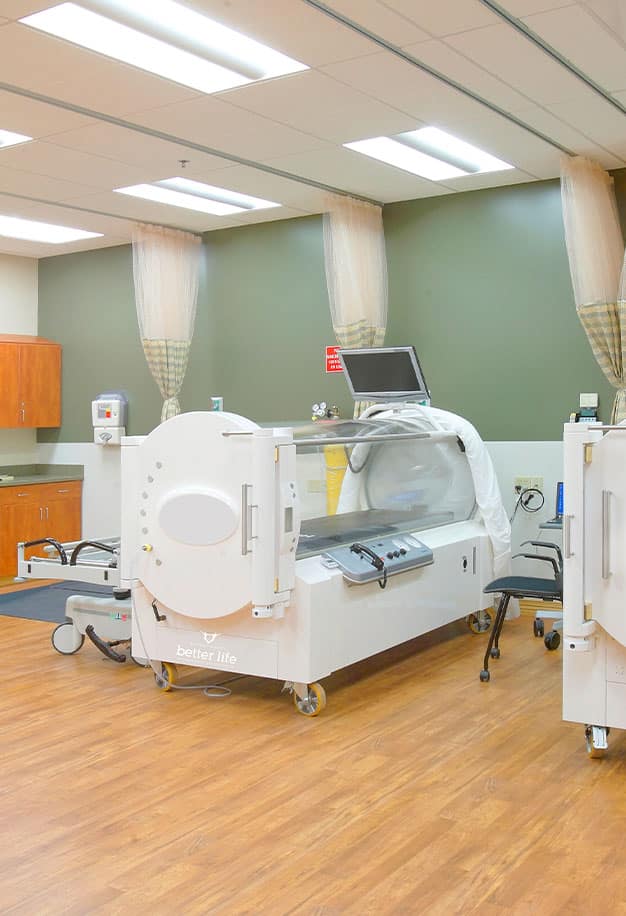
How Does Hyperbaric Chamber Therapy Work?
If you're looking for an effective, efficient alternative to invasive procedures or heavy pharmaceutical medications, using a hyperbaric chamber in Charleston, SC is worth considering. Over the last few years, HBOT has exploded in popularity. More and more people are choosing to use hyperbaric chambers for certain conditions and ailments because they don't require surgery and have no serious side effects.
During hyperbaric therapy treatment, air pressure in the chamber is ramped up so that it is many times higher than ambient air. This increased pressure compresses the breathable oxygen inside the hyperbaric chamber, which you breathe into your body by way of your lungs and skin. The air is then circulated throughout your body via your own bloodstream.
When this pure oxygen is distributed in your body, it saturates your organs, tissues, blood, and spinal cord fluid. It even settles into areas of your body where circulation may be poor or blocked. Like powerful jumper cables, this potent oxygen jump-starts your body's cellular regeneration processes, significantly decreasing harmful inflammation.
This increase in pure oxygen and decrease in inflammation is used to treat many different types of conditions and illnesses, including:
- Sports Injuries and Recovery
- Strokes
- Anti-Aging
- Asthma
- Inflammation
- Allergies
- Traumatic Brain Injuries
- Erectile Dysfunction
- Plastic Surgery
- Cancer
- Diabetes
- COVID-19
- Stem Cell Generation
- Mold Exposure/Toxicity
What Conditions Does a Hyperbaric Chamber in Charleston, SC Treat?
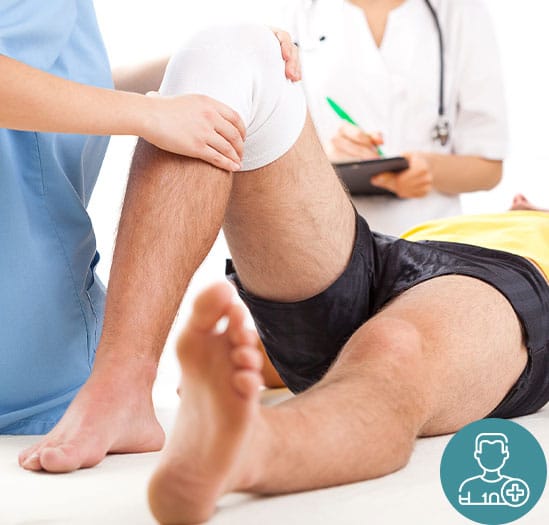
Hyperbaric Chamber Therapy for Sports Injuries
When it comes to common uses for hyperbaric chambers, treatment for sports-related injuries is near the top of the list. Trusted by athletes of all persuasions across multiple sports, hyperbaric chamber therapy has helped countless men and women recover from common issues like fractures, sprains, and compartment syndrome. In fact, studies show that hyperbaric therapy for athletes may work just as effectively as traditional therapy when used as part of a recovery program to achieve the highest healing potential.
That's because competition, training, and recovery go hand in hand. To help with the rigors of high-level sports, HBOT oxygenates muscles, boosts immune systems, and speeds up recovery time for injuries. HBOT cuts down on recovery time by boosting your body's self-healing processes. That, in turn, promotes cell regeneration, which helps encourage tissues and muscles to mend organically, lessening scarring.
Hyperbaric Chamber Therapy for Stroke Victims
When a person has a stroke, blood flow to their brain is disrupted, most often by a major artery blockage. This causes a lack of blood flow, which manifests very quickly, and results in dead brain tissue or hypoxia. When untreated, the blocked artery causes a litany of damage which usually gets worse over time.
While it's impossible to say how much salvageable tissue is lost in the time after a stroke, hyperbaric chamber therapy may help boost cell reproduction and provide oxygen to tissue that died due to lack of blood flow. The non-functioning cells around the damaged tissue area cause much of a person's post-stroke issues. If HBOT can help bring life back to dead cells, the stroke victim could regain lost functionality.
Over the years, many studies have shown promising results when patients use hyperbaric chambers for stroke recovery. In fact, a study conducted in 2013 by Tel Aviv University's Dr. Shai Efrati showed without a doubt that high oxygen levels can awaken dormant neurons. After a two-month period of HBOT for two hours a day, five times a week, brain imaging showed a significant increase in neuronal activity in patients compared to periods of non-treatment.
Patients in this study reported better sensation, less paralysis, and more ability to speak.
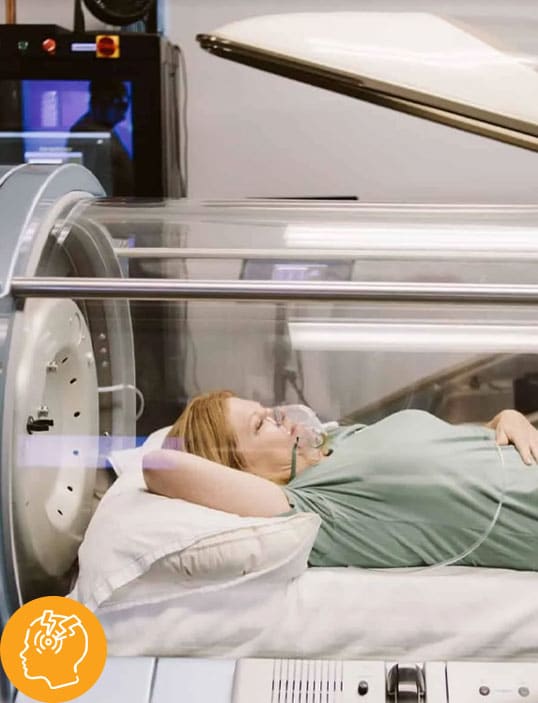

Hyperbaric Chamber Therapy for Anti-Aging
Hyperbaric chamber therapy has been used for years by skincare clinicians to supplement common procedures. The results are often stunning and have been shown to help patients with the following:
- Rejuvenated skin
- Improved skin elasticity
- Skin texture repair
- Scar removal
- Fine line and wrinkle reduction
- Improved skin complexion
But how does a hyperbaric chamber in Charleston, SC kick-start skin rejuvenation? When oxygen levels in your body drop as you age, your body's healing ability slowly declines, resulting in less tissue function, damaged tissue, cracked skin, slow-healing wounds, and wrinkles.
The pressurized oxygen used in HBOT sessions can reach tissue at the cellular level to improve stem-cell growth, immune system defenses, and circulation while reducing inflammation. This process can have a powerful detoxification effect on your body. When toxins are removed, skin blemishes and discolorations are often removed, too, leaving your skin healthy and rejuvenated.
Hyperbaric Chamber Therapy After Plastic Surgery
They say that without pain, there is no gain, and that's typically true with plastic surgery and other cosmetic procedures. However, studies show that HBOT can help alleviate pain and boost recovery after plastic surgeries.
With normal levels of oxygen in the body, plastic surgery healing times can be lengthy and painful. Because hyperbaric chamber treatments expose your body to pure oxygen, recovery time is often reduced, and the healing process is accelerated - by as much as 75% in some instances.
The benefits of hyperbaric chamber therapy, when used for plastic surgery recovery, are numerous and include:
- Less need for post-procedure narcotic medications for pain
- Improved healing and recovery time
- Improved scar healing
- Less overall pain and downtime, allowing patients to return to normal day-to-day life sooner
A few plastic surgery procedures that HBOT can help with include facelifts, liposuction, mommy makeovers, breast augmentations, and even rhinoplasties.
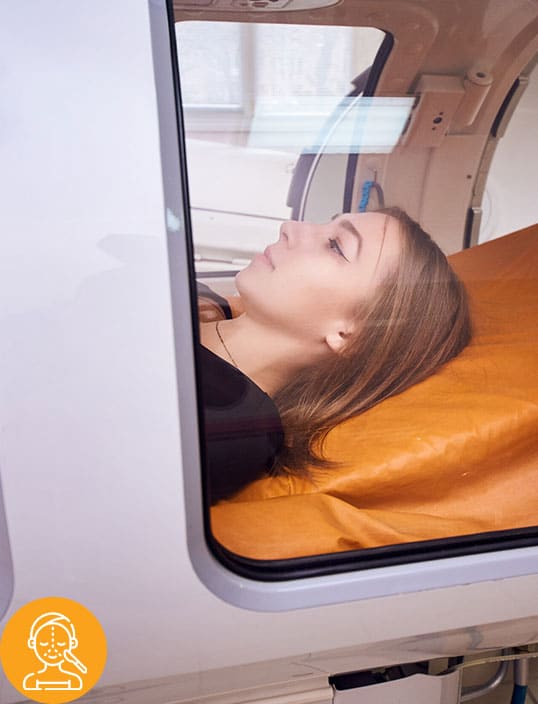
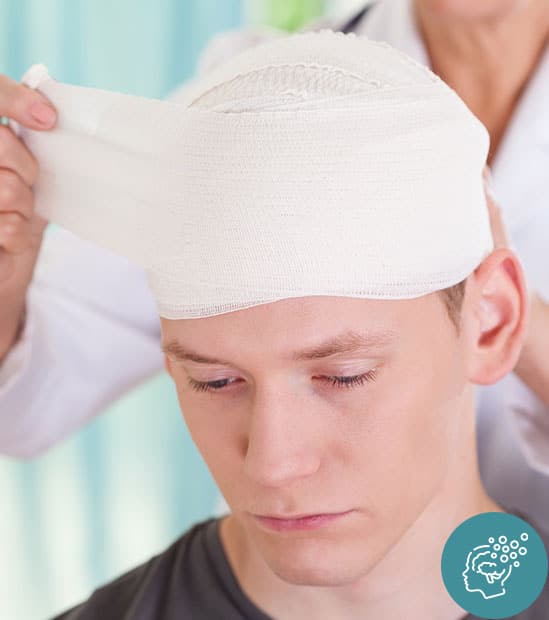
Hyperbaric Chamber Therapy for Traumatic Brain Injuries
It's hard to fathom how much pain and PTSD a person goes through when they suffer from a traumatic brain injury. Serious head injuries don't just affect the recipient of the injury - they impact the patient's family, friends, and co-workers. Being able to treat people with serious concussions, TBIs, and other life-changing conditions like strokes is one of the main reasons we do what we do at Better Life Carolinas.
Mild TBIs usually require emergency care, medication, and extensive rest. But severe brain injuries require comprehensive medical interventions and post-care initiatives like speech therapy and physical therapy. The good news is that using a hyperbaric chamber in Charleston, SC as part of a comprehensive medical strategy may provide natural brain healing in TBI patients.
Hyperbaric chamber treatment's primary use in these cases is to hyper-oxygenate tissues, which helps dissolve oxygen in the plasma. This action triggers several healing processes without overwhelming the patient's antioxidant system. The working mechanism of oxygen under pressure can help improve cerebral blood flow through micro-vessels and target injured areas in order to decrease inflammation.
This promising anti-inflammatory effect is the primary advantage of HBOT for traumatic brain injury patients and clears the way for natural, non-invasive healing.
Hyperbaric chamber therapy has also been documented to help TBI sufferers in many other ways, including:
- Reducing neuroinflammation and cerebral edema
- Increasing the amount of oxygen saturation in the brain
- Increasing stem cell production in brain cells
- Repairing gray matter containing nerve cells
- Repairing white matter which connects cell bodies and carries messages between nerves
- Stimulation of immune system
- Provide oxygen to deficient areas of the brain, reactivating neurons
Hyperbaric Chamber Therapy for Erectile Dysfunction
As it turns out, using a hyperbaric chamber in Charleston, SC may have benefits in the bedroom, too. Studies show that men suffering from ED may now have an additional treatment option to reclaim their sex lives. The International Journal of Impotence Research published a study in 2018 to determine if HBOT was a viable, non-surgical treatment for erectile dysfunction.
The results were very positive and showed that erectile function improved by as much as 88% in patients. Subsequent MRI scans analyzing blood flow of the penis also showed dramatic improvement. The study concluded that, even after years of ED, men could experience benefits from using hyperbaric chambers in lieu of risky surgeries and ineffective ED meds.
The documented improvements were due to more angiogenesis or growth of blood vessels in the penis. When new blood vessels grow in the penis, they can carry more blood to the organ, which helps achieve more frequent, stronger erections.
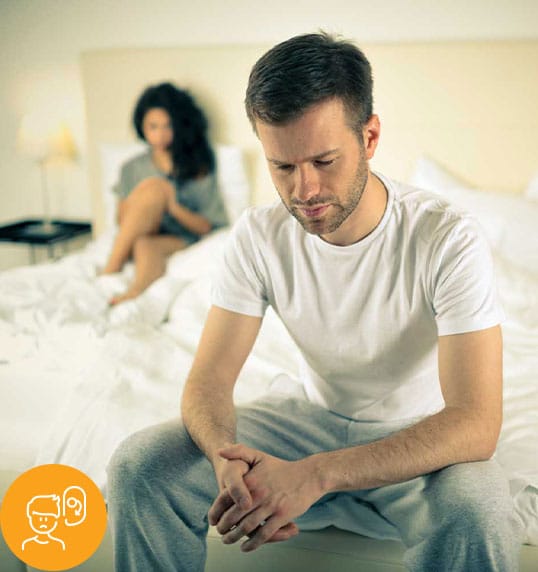
FAQHyperbaric Chamber FAQs
Though hyperbaric chambers are getting more popular with everyone from athletes to office workers, some folks are still out of the loop. If you're interested in learning more about this exciting, non-invasive, natural treatment, we encourage you to contact Better Life Carolinas today. Until we hear from you, here are answers to some of the most common questions we get regarding hyperbaric chamber therapy.
I'm interested in hyperbaric chamber therapy. What does it feel like?
AWhen your session begins, oxygen will immediately circulate throughout the chamber, and pressure will gradually increase. At this point, most patients start feeling a fullness sensation in their ears, like they're ascending or descending in a plane. This feeling only lasts for 10-15 minutes. An experienced Better Life Carolinas hyperbaric technician will guide you on how to relieve any ear pressure, if necessary. Once the optimal pressure is reached, all you have to do is relax and breathe normally. As the session ends, your hyperbaric technician will gradually lower chamber pressure, which lasts about 10 minutes. During this stage, you may experience a light popping sensation in your ears. Once pressure is back to normal, you can exit the chamber and go about your day.
Should I be worried about any side effects from a hyperbaric chamber?
AIn general, you don't have to worry about serious side effects from HBOT. That's because it's an all-natural treatment - there are no incisions or addictive medications involved. However, some patients experience mild ear drum irritation. During your session, a Better Life Carolinas hyperbaric chamber expert will be by your side to help prevent this from happening.
How many hyperbaric chamber sessions will I need?
AWithout a proper evaluation of your unique needs, it's hard to say with certainty. At Better Life Carolinas, we know that every patient is different. As such, every recommended therapy will be different, including the number of hyperbaric therapy sessions you need. Generally speaking, patients usually require 30 to 40 sessions. HBOT has a cumulative effect on your body and, as such, provides the best results with regularly occurring sessions.
Is there anybody who should avoid hyperbaric chamber treatments?
AIf you have a form of air-trapping emphysema like COPD or have an untreated pneumothorax, HBOT isn't for you. At Better Life Carolinas, every one of our patients undergoes a full evaluation to ensure that hyperbaric oxygen therapy is safe for you and your body.
Unlock the "New You" with Hyperbaric Chamber Therapy from Better Life Carolinas
If you're looking for a hyperbaric chamber in Charleston, SC look no further than Better Life Carolinas. Whether you're a professional athlete looking to maximize recovery time or need a natural way to look and feel younger, our experts are here to help. Unlike some clinics that rely on major invasive procedures and addictive medications, our team focuses on natural, holistic ways to heal your body. If you're ready to optimize your health and reclaim your youth, contact us today to learn more about HBOT and our other natural therapies.
Free Consultation
Latest News in Charleston, SC
Charleston gets a rare snow show as Charlotte misses out
wcnc.comhttps://www.wcnc.com/article/weather/weather-iq/charleston-vs-charlotte-snowfall/275-9efd6f63-bd4e-4065-a8fc-fd9934d89254
Charlotte could see a few flurries but Charleston, South Carolina could see a Top 5 snowfall event.CHARLESTON, S.C. — In recent years, Charlotte, North Carolina has been waiting and lacking snow. The snow that fell on Jan. 10 of this year finally broke the 1,077 day streak without snow. Charlotte has been too far south and too warm f...
Charlotte could see a few flurries but Charleston, South Carolina could see a Top 5 snowfall event.
CHARLESTON, S.C. — In recent years, Charlotte, North Carolina has been waiting and lacking snow. The snow that fell on Jan. 10 of this year finally broke the 1,077 day streak without snow. Charlotte has been too far south and too warm for most of the snow chances between now and January 2022, when three years ago the city saw back-to-back-to-back weekends with snow.
But this time, Charlotte isn't too far south. The city is too far north.
During the winter months, a low-pressure weather system will typically produce the heaviest snowfall about 100 miles north of its center location. That's why Charlotte is typically too far south for snow.
However, this weather setup is uniquely different. When the low pressure is over water, it can be as much as 200 miles north of the center that experiences impacts from the heaviest snow. That is the case for this setup.
The further north you get from a low, the drier the air. In this scenario, a cold front is also aiding this system to remain well south of the Carolinas but just enough to our north to bring a significant snowfall to the South Carolina shoreline.
Why is there more snow south of Charlotte? The low that is bringing the precipitation is so far south that it can only bring snow so far north. A cold front is also putting up the Heisman keeping most snow away from Charlotte but keeping it cold.. @wcnc pic.twitter.com/j3lWrAoqZ2
— Chris Mulcahy (@YOURWEATHERMAN) January 21, 2025
This area also has a lot of moisture, which increases the snow rates and leads to greater accumulations.
Credit: WCNC Weather Impact Team
The Jan. 21 snow event in Charleston could make the list of the top 5 snowfall events.
In most recent memory, a weather setup back in 2018 produced snow for the city but is different than its challenger in 2025. This path was a more north-to-south movement compared to a low-pressure system moving southwest-to-northeast.
Here is what was needed for this historic snowfall:
Plain and simple, this low pressure needed to be between 150 and 200 miles further north. The image below is the ideal Nor'easter setup that impacts the Mid-Atlantic states the hardest.
Credit: WCNC Weather Impact
For Charlotte to likely see the biggest snow impacts, the low needs to pass directly over Charleston.
The last big Charlotte snowstorm back in 2004 had this set up.
RELATED: Weather IQ: The 5 biggest snow storms in the greater Charlotte area
NWS increases predicted snowfall tonight in Lowcountry and extends cold weather advisory
Jonah Chesterhttps://www.postandcourier.com/news/nws-cold-weather-advisory-extended-charleston/article_b50b2e28-d7ed-11ef-bf29-fbc70ed24b74.html
A mix of winter weather, including snow, will hit the Lowcountry later Jan. 21, according to the latest forecast from the National Weather Service, and continue overnight with many areas in the Charleston tri-county area potentially seeing several inches of precipitation.Frigid temperatures, particularly lows in the 20s with even colder wind chills, over the next several nights bring the possibility of continued icy conditions as well as a slight chance of freezing rain later in the week.But first, the snow — a rarity alo...
A mix of winter weather, including snow, will hit the Lowcountry later Jan. 21, according to the latest forecast from the National Weather Service, and continue overnight with many areas in the Charleston tri-county area potentially seeing several inches of precipitation.
Frigid temperatures, particularly lows in the 20s with even colder wind chills, over the next several nights bring the possibility of continued icy conditions as well as a slight chance of freezing rain later in the week.
But first, the snow — a rarity along the S.C. coast.
Predicted snowfall for the Lowcountry increased, according to the morning NWS forecast. The Weather Service predicted that southeast South Carolina could see 3 to 5 inches of snow through Jan. 22, with some localized amounts of up to six inches possible.
"It does look like, at some point later this evening, it will be entirely snow across the Lowcountry. There's still some question about what point in time that transition occurs," said NWS meteorologist Jonathan Lamb early on Jan. 21.
There are still some unknowns in the forecast. Precipitation began in the Charleston area around 4 p.m. Jan. 21, starting with rain and freezing rain. Other areas were expected to see precipitation start by 7 p.m., with the heaviest snow falling overnight and into the early morning of Jan 22. Snow should end by noon on Jan. 22, with the winter storm warning set to expire at noon.
Precipitation will likely to start as sleet along the Coastal Plain and change to snow at some point during the evening. The point at which the transition happens will be a significant factor in the total snow accumulations.
Inland counties will see mostly snow, with little or no sleet or freezing rain.
Charleston and Beaufort counties are predicted to see a snow-sleet mix in the late afternoon Jan. 21 which could turn into snow overnight. There is a "significant" chance for snow and freezing rain between 8 p.m. tonight and 6 a.m. Jan. 22.
Portions of upper Colleton, Dorchester and Berkeley counties — including Walterboro, Summerville and Moncks Corner — are expected to see primarily snow into the evening of Jan. 21.
The NWS advises that roads, especially bridges and overpasses, will likely become slick and hazardous as a result of the frozen precipitation. The slippery conditions could impact commutes the evening of Jan. 21 and morning of Jan 22.
Three warming centers opened across Charleston County Jan. 20 due to the cold and winter storm warning:
Amber Henry, executive director of Holy City Missions, said their warming center has been at capacity of 84 guests the past couple weeks. She anticipates reaching capacity again for the next few nights, but because Holy City Missions is in contact with Hibben and Seacoast, they'll be able to transport people to the other warming centers if needed.
Henry added that between the three warming centers on Jan. 20, there were 140 guests.
According to a Charleston County press release, if all three warming centers reach capacity, the county will open a shelter at the Charleston County Sheriff's administration building at 3831 Leeds Ave. starting at 6 p.m. Jan. 21.
Snow just the beginning as cold, hazards could linger
That may not, however, be the end of the area's weather-related travel troubles as snow and ice that melts during the day on Jan. 22 could refreeze overnight, bringing the possibility of dangerous black ice. The NWS also warns that melting ice could fall from the elevated places where it accumulates, creating one more hazard to be concerned about.
Along with the winter storm warning, a cold weather advisory is in place until 10 a.m. Jan. 23. It warns of an "unusually long period of bitterly cold weather."
A cold air mass settled over the area this week causing temperatures to tumble. Highs on Jan. 21 will reach the low to mid-40s, but overnight temperatures will drop into the 20s, according to an early-morning winter weather briefing. The following day could be the coldest of the season so far with highs likely not get out of the 30s. Overnight wind chills are forecast to be in the low teens. By Jan. 23, conditions will warm marginally, but overnight lows will again drop into the low 20s.
An area of low pressure moving out of the Gulf of Mexico is expected to pass to the south and offshore of the the Palmetto State, where it will contact the cold air in place over the region. Its exact path will be a determining fact in the amount an type of precipitation.
The NWS reports that the Jan. 22 night temperatures will be near-record low. The lowest temperature on record for parts of the Lowcountry were just two degrees colder in 1985.
The extended cold weather advisory comes as forecasters predict another weak storm system could clip the coast on Jan. 23, following the rare winter storm. Its impacts are expected to be less significant.
"There is low-end risk for some freezing rain along the immediate coast on Thursday with some minor accumulations possible. At this point in time it doesn't look like this going to be too big a deal for us," NWS meteorologist Brian Adam said Jan. 20.
Roads already being prepped
The S.C. Department of Transportation began prepping roads on Jan. 19 and continued on Jan. 20, said agency spokeswoman Hannah Robinson. DOT typically begins preparations two days in advance as the salt brine solution used will stick to roads unless it rains, she said.
Sometimes, crews will leave salt deposits in medians and curbs to help prevent pooling water which could later freeze, Robinson said.
Using a "tiered system" of roadway preparation, DOT begins salting primary roads and interstates first, then following to secondary roads and occasionally neighborhood roads, if warranted, Robinson said.
While the immediate threat to the Upstate has lessened, Robinson said, the DOT operates on a preparedness system that covers the entire state, with some Upstate roads already pre-treated.
DOT monitors upwards of 41,000 miles of road across the state and regularly monitors weather updates. Robinson advised that drivers use the DOT storm resource page at scdot.org/travel/stormResources to monitor weather and road updates.
"As Southerners, we're not used to driving on ice or snow, so it can be hard to navigate that," Robinson said. "So we always encourage people, if you're able to, stay off the roads during any kind of weather event."
'No yahoos'
Ahead of the winter weather, government offices and school districts across the region have announced closures.
Charleston County School Districts will be dismissing two hours early on Jan. 21, and have an e-learning and remote work day Jan. 22.
Berkeley County will have a half day on Jan. 21 and virtual learning day on Jan. 22. Dorchester County School District 2 announced an early release on Jan. 21 and a virtual learning day on Jan. 22. Dorchester District 4 will be virtual both Jan. 21 and Jan. 22.
Charleston County offices will close at 4 p.m. on Jan. 21, and in-person operations will remain suspended Jan. 22. Curbside recycling is suspended Jan. 22 and will resume Jan. 23, but will be delayed by two hours. For the rest of the week, recycling will be on a one-day delay schedule.
City of Charleston offices will close at 3 p.m. on Jan. 21 and remain closed on Jan. 22. All public meetings scheduled for these days will be rescheduled. Garbage will not be collected on Jan. 22. Collection will resume on Jan. 23 if road conditions are safe.
As of midday Jan. 21, Charleston officials said they were not considering a curfew like the one ordered last August during Tropical Storm Debby that closed off the peninsula to traffic.
But city spokeswoman Deja Knight McMillan said that could change if too many people venture out causing “further strain on first responders.”
“Stay home,” McMillan encouraged.
The city’s informal motto of “No yahoos” still applies, she said. She’s referencing a quote from Mayor William Cogswell during that August storm discouraging thrill-seekers — or, to use Cogswell's descriptor, "yahoos" — from driving through the city's flood-prone streets. They even made hats.
The Livability Department notified the city’s carriage businesses to have their horses off the streets by 3 p.m. Jan. 21. No tours will be run Jan. 22.
CARTA will be ending its service at 8 p.m. on Jan. 21, according to a press release. Operations for Jan. 22 will be "dependent on weather and road conditions."
As winter weather approaches, Charleston International Airport (CHS) officials, in coordination with the SCDOT, are preparing to address the challenges posed by snow and ice.
Specialized snow removal equipment has been prepositioned to ensure that runways and taxiways remain operational and safe for aircraft. SCDOT and airport teams have pre-treated roads leading to the airport, helping to minimize icy conditions and ensure smoother access for travelers. Parking garage entrances and pedestrian walkways have been pre-treated to enhance safety for passengers and staff.
"While there may be no departing or arriving flights, our dedicated teams will remain on-site 24-7, working diligently to prepare for a swift and safe return to normal operations when weather permits," said Elliott Summey, executive director and CEO of Charleston International Airport said.
Travelers should check with individual airlines for the latest flight updates before heading to the airport. Delays and cancellations may occur due to changing weather conditions.
Maddy Quon, Megan Fernandes and Ali Rockett contributed reporting.
This is a developing story. Check back for updates.
Reach Caitlin Bell at 843-790-9433. Follow her on Twitter/X @CaitlinPatBell
Lowcountry municipalities prepare for a week of wintry weather
Autumn Kleinhttps://www.live5news.com/2025/01/21/lowcountry-municipalities-preparing-roads-citizens-upcoming-winter-weather/
CHARLESTON, S.C. (WCSC) - As areas across South Carolina brace for the expected winter storm, government leaders in Charleston and in Berkeley County are taking action to prepare.CITY OF CHARLESTONThe City of Charleston says it is actively taking the necessary steps ahead of the storm, working closely with Charleston County Emergency Management, the South Carolina Department of Transportation and the National Weather service to monitor the situation.In response to the inclement weather, city offices will close at 3 p.m...
CHARLESTON, S.C. (WCSC) - As areas across South Carolina brace for the expected winter storm, government leaders in Charleston and in Berkeley County are taking action to prepare.
CITY OF CHARLESTON
The City of Charleston says it is actively taking the necessary steps ahead of the storm, working closely with Charleston County Emergency Management, the South Carolina Department of Transportation and the National Weather service to monitor the situation.
In response to the inclement weather, city offices will close at 3 p.m. Tuesday and will remain closed all day Wednesday.
For those who live in city limits, garbage and trash collection will proceed as usual Tuesday evening until road conditions worsen, but there will be no trash collection Wednesday.
BERKELEY COUNTY
Ahead of the storm, Berkeley County emergency operations will transition to OPCON 2 at noon Tuesday.
OPCON 2 means that an emergency operation plan is implemented in preparation for an anticipated emergency or disaster that will affect the state. This allows crews to respond, prepare and operate as needed.
Crews have already started applying salt to county-maintained bridges and around certain county facilities. They will continue this treatment throughout the day Tuesday.
The county has also staged five motor grader vehicles around the county in the event of plowing snow or clearing ice off roadways.
The South Carolina Department of Transportation has also pre-treated ramps and overpasses off I-26 with salt.
Berkeley County government offices will close at 4 p.m. Tuesday and the county’s landfill will close at 3 p.m.
Berkeley County has also set up a citizen call line for non-emergency calls only. The automated line is available at all hours of the day by calling 843-719-4800, but if it is an emergency, be sure to call 911.
GENERAL WEATHER TIPS
Safety is important during this wintry weather.
Officials want to remind people to dress in layers and cover exposed skin to protect against frostbite, keep pets indoors or make sure they have a warm shelter and ensure pipes are properly insulated to prevent freezing.
If possible, avoid driving, especially Tuesday evening and Wednesday morning.
Stay updated with the latest information here on Live 5 News.
Copyright 2025 WCSC. All rights reserved.
"Don't turn against, lean into each other," President Biden urges in Charleston
Victoria Hansenhttps://www.southcarolinapublicradio.org/sc-news/2025-01-20/dont-turn-against-lean-into-each-other-president-biden-urges-in-charleston
As President Joe Biden and the first lady carefully descended the stairs of Air Force One, on a slick, overcast day at Joint Base Charleston Sunday, there was a familiarity about the visit, a kind of homecoming if you will.The first family has vacationed on Kiawah Island. They’ve grieved with the families of the Mother Emanuel massacre, unexpectedly finding solace in the loss of their own son Beau. President Bien has debated, campaigned, and even received a key endorsement in Charleston.But this trip to the Lowcountry is ...
As President Joe Biden and the first lady carefully descended the stairs of Air Force One, on a slick, overcast day at Joint Base Charleston Sunday, there was a familiarity about the visit, a kind of homecoming if you will.
The first family has vacationed on Kiawah Island. They’ve grieved with the families of the Mother Emanuel massacre, unexpectedly finding solace in the loss of their own son Beau. President Bien has debated, campaigned, and even received a key endorsement in Charleston.
But this trip to the Lowcountry is how the outgoing president decided to spend his final, full day in office; showing gratitude for the state that paved the road to the White House and celebrating the message of one of his childhood heroes, Dr. Martin Luther King Jr.
“We know the struggle toward redeeming the soul of this nation is difficult and ongoing,” President Biden told worshippers at Royal Missionary Baptist Church in North Charleston.
“The distance is short between peril and possibility,” he said.
“But faith teaches us the America of our dreams is always closer than we think.”
It was a family affair at the historic church as the president was flanked in the first pew by not only his wife, but his son Hunter Biden as well as longtime colleague and friend Congressman Jim Clyburn. Behind them, sat a who’s who of dignitaries including the recently elected and first Black mayor of North Charleston, Reggie Burgess.
But of all the dignitaries in attendance, it was Clyburn’s endorsement in 2020 that made Biden’s presidency possible.
“I would not be standing here in this pulpit if it were not for Jim Clyburn,” Biden said.
After more than an hour of joyful, soul lifting song and a sermon about the gifts of struggle, the president’s heavily guarded motorcade whisked him away to a site in Charleston where historians estimate nearly half of all Africans enslaved in this country were brought ashore in shackles, Gadsden’s Wharf.
The hallowed land is now home to the city’s new International African American Museum. The President and first lady, Jill Biden, toured two of the museum’s galleries, paying tribute to people who persevered despite being kidnapped, sold and stripped of their identities.
Former longtime Charleston Mayor Joe Riley, who dreamed of sharing the untold stories of African Americans and made the museum possible, held his wife’s hand as he proudly looked on.
“You should have a statue of Joe in here,” President Biden remarked.
Outside, beneath the lofted museum, people gathered to hear from the president on his final day. A large banner hung above the stage reading, "President Biden, Soul of the Nation.”
Among those waiting in the crowd is Charles Brave who shared his concerns about the days ahead, with the inauguration of a new president, Donald Trump.
“The Democratic process has taken place whether we like it or not,” Brave said. “We got what we got now. We've got to figure our way through.”
The sun came out and a chilly wind whipped through the waterfront stage, as Congressman Clyburn took the stage. He touted the president’s numerous accomplishments, especially for women and African Americans.
“Joe looks beyond our zip codes and addresses our needs,” Clyburn said. “He is the most compassionate public servant that I’ve ever worked with.”
Then, Clyburn invited the president on stage and gifted him with handwoven sweetgrass basked adorned with Carolina Maplewood in its center. The gift is symbolic as the wood comes from land where enslaved Africans once labored and sweetgrass fanner baskets have long been used by Africans for winnowing rice, that is separating the chaff from the hull.
The gift’s sentiment wasn’t lost on President Biden.
“There has been a long line of Black patriots who have helped make the promise of America real for all Americans, who have helped us become the nation we say we are and want to be.”
As Biden wrapped up his final, official trip as president and headed back to Joint Base Charleston, people lined downtown streets, waving and holding signs. Some read, “We love Joe”.
UPDATE: Winter storm warning for Lowcountry until Wednesday midday – up to 5 inches of snow
SC Weather Bothttps://www.thestate.com/news/weather-news/article298852153.html
On Tuesday at 3:11 p.m. the NWS Charleston SC issued an updated winter storm warning valid from 5 p.m. until Wednesday noon. The warning is for Inland Berkeley and Coastal Jasper as well as Charleston County.Total snow accumulations between 3 and 5 inches. Locally higher amounts possible anticipated for Georgia, Bulloch, Candler, Effingham, Evans, Jenkins, Screven, and Tattnall counties. In South Carolina, Allendale, Beaufort, Charleston, Coastal Colleton, Coastal Jasper, Dorchester, Hampton, Inland Berkeley, Inland Colleton, Inland J...
On Tuesday at 3:11 p.m. the NWS Charleston SC issued an updated winter storm warning valid from 5 p.m. until Wednesday noon. The warning is for Inland Berkeley and Coastal Jasper as well as Charleston County.
Total snow accumulations between 3 and 5 inches. Locally higher amounts possible anticipated for Georgia, Bulloch, Candler, Effingham, Evans, Jenkins, Screven, and Tattnall counties. In South Carolina, Allendale, Beaufort, Charleston, Coastal Colleton, Coastal Jasper, Dorchester, Hampton, Inland Berkeley, Inland Colleton, Inland Jasper, and Tidal Berkeley counties until noon Wednesday. The NWS says, "There is a risk for sleet occurring along the lower South Carolina coastal counties, generally along US 17 and towards the coast."
"Roads, and especially bridges and overpasses, will likely become slick and hazardous. Travel could be very difficult. The hazardous conditions could impact the Tuesday evening and Wednesday morning commutes. Suspension bridge cables may accumulate ice, leading to the potential for falling ice," adds the NWS. "If you must travel, keep an extra flashlight, food, and water in your vehicle in case of an emergency. The latest road conditions for the state you are calling from can be obtained by calling 5 1 1. Persons are urged to stay indoors until conditions improve. If you must go outside, dress in layers. Several layers of clothes will keep you warmer than a single heavy coat. Cover exposed skin to reduce your risk of frostbite or hypothermia. Gloves, a scarf, and a hat will keep you from losing your body heat. Persons should consider delaying all travel. If travel is absolutely necessary, drive with extreme caution. Consider taking a winter storm kit along with you, including such items as tire chains, booster cables, flashlight, shovel, blankets and extra clothing. Also take water, a first aid kit, and anything else that would help you survive in case you become stranded."
This warning is in effect until Wednesday at noon.
On average, weather-related vehicle crashes kill more than 6,000 people nationwide and injure more than 480,000 people each year. Slow down to stay safe if you must travel during periods of snow or freezing rain. If the temperature outside is near freezing, it is safest to assume ice is present on roadways and drive accordingly. If there is ice on power lines or tree branches, the weight may cause them to snap and fall. Avoid driving during those conditions if possible. If you must go out, choose a route with the least number of trees and power lines. Never touch a downed power line, and call 911 if you encounter one. Here are some additional winter weather driving tips:
Source: The National Weather Service
This article was generated by the South Carolina Bot, software that analyzes structured information, such as data, and applies it to articles based on templates created by journalists in the newsroom. No human journalist was harmed in this experiment. You can report errors or bugs to mcclatchybot@mcclatchy.com.
This story was originally published January 20, 2025 at 2:38 PM.
Disclaimer:
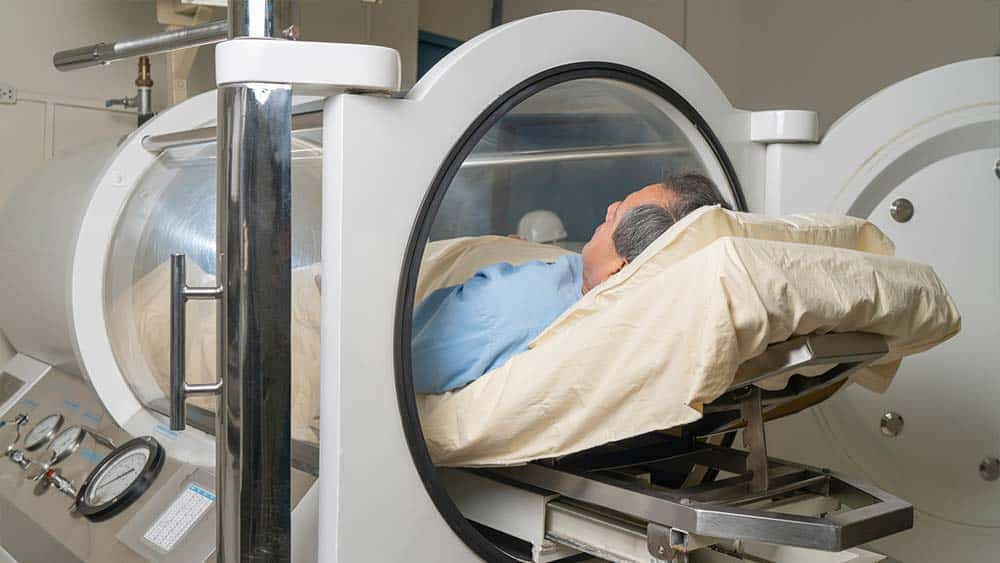
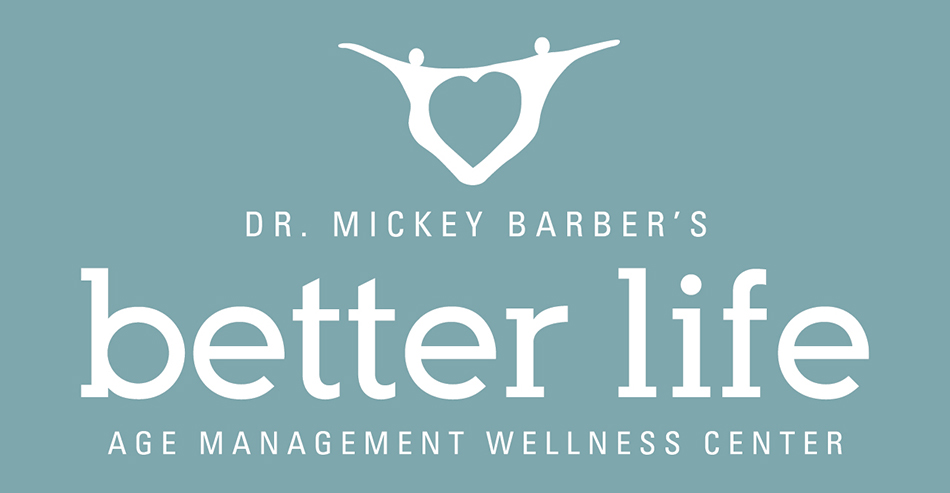
Copyright 2025 by Dr. Mickey Barber's Better Life
Notice of Privacy Practices
 843-737-2597
843-737-2597